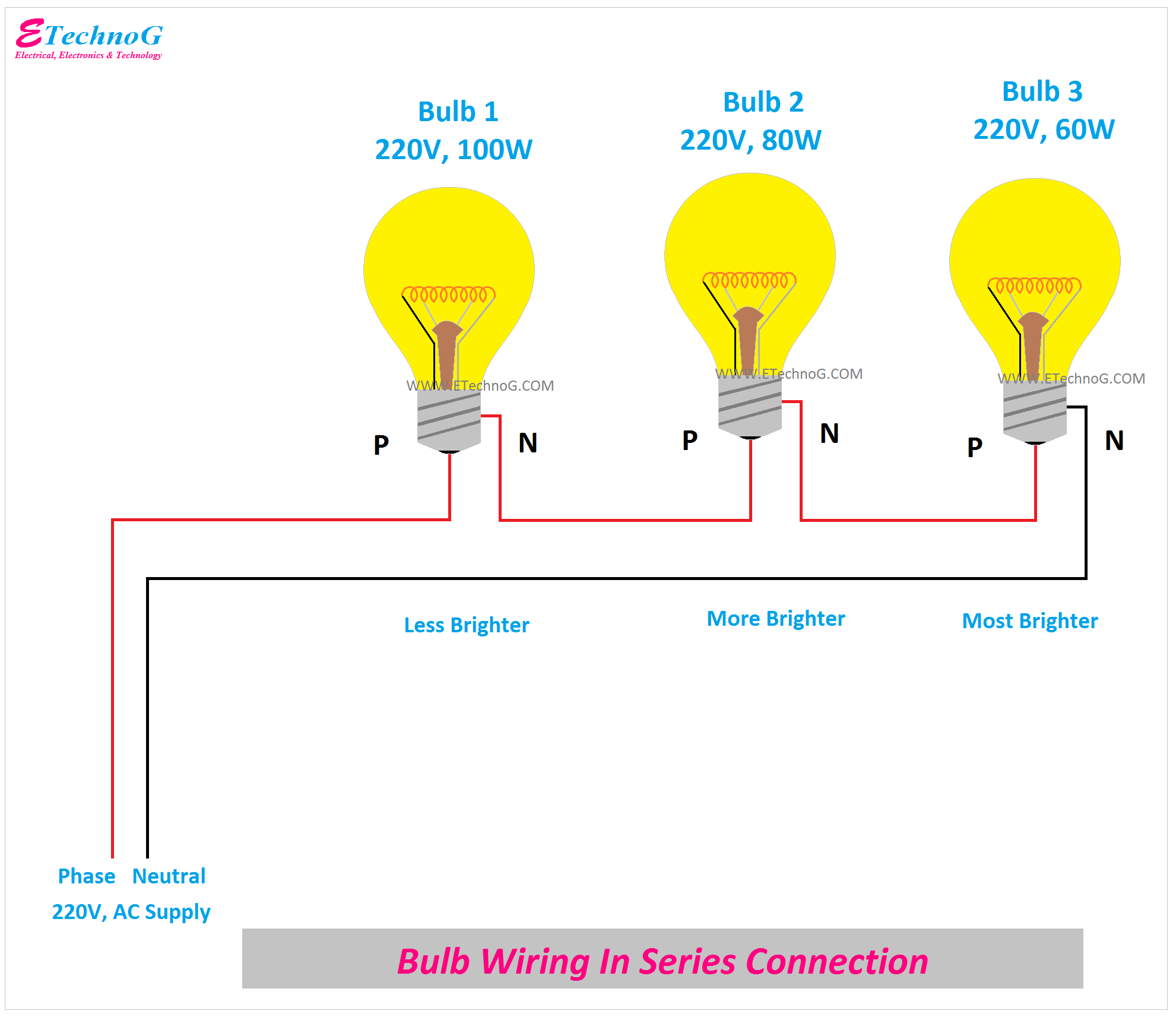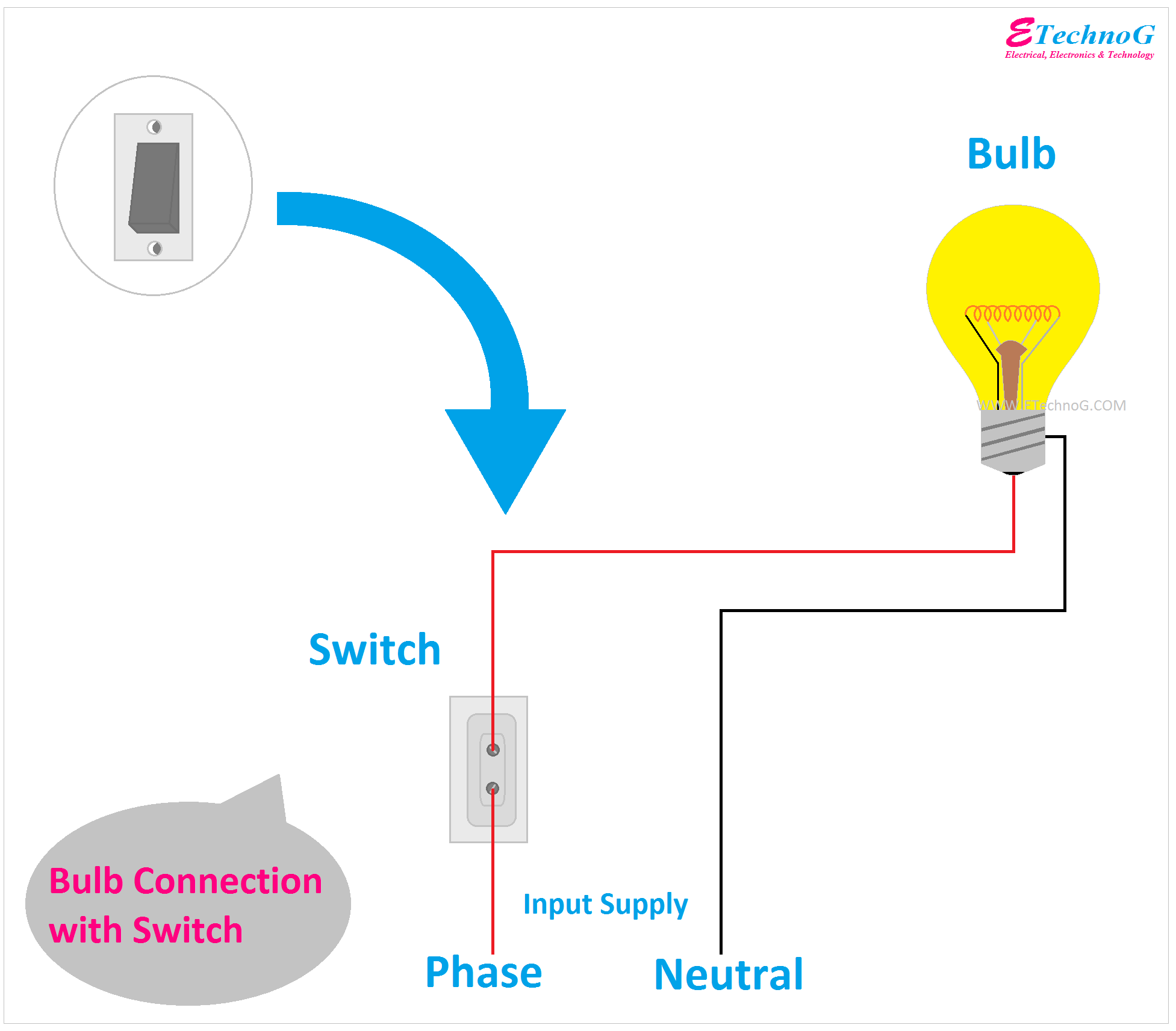Bulb Wiring in Series and Parallel Connection
Hey, in this article we are going to see a bulb wiring diagram. We will learn how to wire bulbs in series and parallel connections. There are some different places or applications where we need to connect bulbs either in parallel connection or in series connection. So, we must know how to connect properly. In fact, we will learn about the current, power consumption, and other important factors.
Bulb Wiring in Series Connection
The bulb has two terminals for AC we can consider it as - Phase and Neutral. So when the Neutral terminal of the first bulb is connected to the neutral terminal of the second bulb and as same, all the bulbs are connected like that then this connection will be called a Series Connection. Here, you can see the wiring diagram of bulbs in series.
Here, you can see the neutral terminal of the first lamp is connected to the phase terminal of the second lamp and the neutral terminal of the second lamp is connected to the phase terminal of the third lamp. Here, we have shown a 100W lamp, an 80W lamp, and a 60W lamp.
Now the question is in the series connection which bulb will glow brighter. Remember that the brightness of the bulb depends upon its power consumption. More power consumption means more brightness. In the series connection, the current flow is the same or equal through all the bulbs. And the power dissipation by the bulb depends upon the internal resistance of the bulb and the flow of current through the bulb. For a rated input voltage, the resistance of the low-wattage bulb will be more than the high-wattage bulb, it can be measured by,
R= V^2/P or I = V/Rs
So, in the series connection as the low-wattage bulb has higher power dissipation, it will glow brighter.
So, according to the above diagram, the 60-watt bulb will glow with the most brightness and the 100-watt bulb will glow with less brightness.
So you can follow the below procedure to connect multiple bulbs in series,
- First of all, determine the voltage rating of the bulbs you will be using. Make sure that the power source you have can supply the appropriate voltage for the bulbs.
- Connect one wire from the positive terminal of the power source to the positive terminal of the first bulb.
- Connect a second wire from the negative terminal of the first bulb to the positive terminal of the second bulb.
- Repeat this process, connecting the positive terminal of each subsequent bulb to the negative terminal of the previous bulb until you have connected all the bulbs in the series.
- At last, connect a wire from the negative terminal of the last bulb back to the negative terminal of the power source, completing the circuit.
Bulb Wiring in Parallel Connection
When the phase terminals of all the bulbs are connected together and the neutral terminals of all the bulbs are connected together then it will be called the parallel connection. There is no end-to-end connection. Here, you can see the wiring diagram of bulbs in parallel.
In a parallel connection, the voltage across all the bulbs is equal to the supply voltage. But the current flow through them is different. In the parallel connection, the highest-wattage bulb will glow with more brightness as it dissipates more power. So according to the above diagram, the 100-watt bulb will glow with the highest brightness while the 60-watt bulb will glow with the lowest brightness.
So you can follow the below procedure to connect multiple bulbs in parallel,
- Here also, at first, you need to determine the voltage rating of the bulbs you will be using. Make sure that the power source you have can supply the appropriate voltage for the bulbs.
- Now, connect one wire from the positive terminal of the power source to the positive terminal of each bulb. You can do this by using a junction point where all the positive wires meet.
- Connect another wire from the negative terminal of the power source to the negative terminal of each bulb. Again, you can use a junction point to connect all the negative wires.
Bulb Connection with Switch
When you connect a bulb with a switch the phase terminal of the bulb is to be connected to anyone terminal of the switch. The other terminal of the switch is to be connected to the phase terminal of the power source. The neutral terminal of the bulb is to be directly connected to the neutral terminal of the power source. Here, you can see the wiring of a bulb with a switch.
- Connect one wire from the positive terminal of the power source to one terminal of the switch. This is typically done by connecting one end of the wire to the positive terminal of the power source and the other end to one of the terminals of the switch.
- Connect a second wire from the other terminal of the switch to the positive terminal of the bulb. This wire will carry the current from the switch to the bulb.
- Connect a third wire from the negative terminal of the bulb to the negative terminal of the power source. This completes the circuit and allows the current to flow from the power source, through the switch, to the bulb, and back to the power source.
Series Bulb Connection for Testing
Here, you can see the diagram for a series bulb connection for testing.
The connection is very simple, you just need to connect a socket or outlet instead of a switch in series with the lamp and then during the testing, you need to connect the two leads of the equipment that is to be tested to this socket or outlet.
Read Also:




